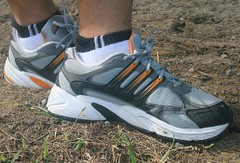ASSIMILATION
Blood transports the digested food products round the body after they are being absorbed by the villi in the ileum. They are then taken up by cells. The UPTAKE and USE of the products of digestion is called ASSIMILATION.
A. ASSIMILATION OF GLUCOSE
Blood transports the digested food products round the body after they are being absorbed by the villi in the ileum. They are then taken up by cells. The UPTAKE and USE of the products of digestion is called ASSIMILATION.
A. ASSIMILATION OF GLUCOSE
- Glucose is used as fuel by all respiring cells. Energy is produced as a result of respiration and used in various cellular activities.
- Excess glucose is converted into glycogen with the help of Insulin and stored in the liver cells and muscle tissues in the form of glycogen granules. When the body needs energy or when the blood sugar level decreases, the glycogen in the liver will be converted back to glucose and released into the blood circulatory system.
- If the stored glycogen is not used for more than 6 hours, it may be converted to fats and stored in the adipose tissues.
B. ASSIMILATION OF FATS
- A portion of the absorbed fats are stored in the adipose tissues as fat droplets.
- Some are used in the synthesis of cell membrane and the rest are used for energy (only if the body is in short of carbohydrate as a source of energy).
C. ASSIMILATION OF AMINO ACIDS
- Amino acids serve as the basic units in the synthesis of large protein molecules. The proteins may be used for growth and development.
- Enzymes and hormones are also synthesized from amino acids.
- Excess amino acids cannot be stored. They are broken down in the liver into the amino part and the carbohydrate part. The amino part will then be transported to the kidney in the form of UREA for excretion whereas the carbohydrate part will be converted into glycogen and stored in the liver cells and muscle tissues.
- The process in which EXCESS AMINO ACIDS are broken down in the liver is called DEAMINATION.
EGESTION
The residues of food that cannot be digested or absorbed leave the small intestine and pass into the large intestine. There, water and vitamins (synthesised by bacteria) are absorbed and waste material is compacted into faeces. The faeces is propelled along the colon and rectum. When the anal sphincter is relaxed, the faeces is expelled. This process is called defaecation or egestion.
The residues of food that cannot be digested or absorbed leave the small intestine and pass into the large intestine. There, water and vitamins (synthesised by bacteria) are absorbed and waste material is compacted into faeces. The faeces is propelled along the colon and rectum. When the anal sphincter is relaxed, the faeces is expelled. This process is called defaecation or egestion.
